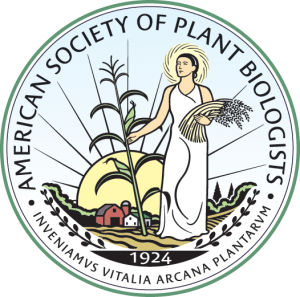Testimonials for Pioneer Members Thomas Guilfoyle and Gretchen Hagen
Christopher Brown – My time in the Hagen/Guilfoyle laboratory at the University of Missouri-Columbia was instrumental in my career. I am grateful for having been a part of their long legacy in the plant science world.
Yi Li – Tom and Gretchen made remarkable contributions to the field of auxin biology that are not only profound, but also enduring, positioning them as true pioneers in the field of plant biology. Their dedication to science is exemplary, and their impact on the auxin community is immeasurable. As a postdoctoral trainee in their lab, I consider myself extremely fortunate to have had the opportunity to learn from them. Their mentorship and guidance were invaluable to me, and I will always be grateful to them for what they have imparted to me. Although Tom’s passing left a deep void, his legacy will continue to inspire and influence us. He was a brilliant scientist, and his passion for scientific research will always be remembered.
Jor Polacco – Tom and Gretchen were not only leaders in the field of auxin action, but also fantastic contributing colleagues to the plant field at large, and to their colleagues at the University of Missouri. They were a boon to my research, and fantastic teachers, a duty they took very seriously. The reached many, from students to postdocs to colleagues worldwide.
Brenda Wingfield – In the early 1980s, molecular biology research was rapidly advancing, and new techniques for cloning and sequencing DNA were being developed. It was during this time that I had the opportunity to work with Tom and Gretchen on a Master of Science research project. Tom’s lab was in the Botany Department at the University of Minnesota, St Paul Campus. I was a biochemistry student with very little experience in plant physiology. Looking back, it was brave of Tom to take me on as a student from Africa.
My research focused on Cauliflower Mosaic virus (CaMV), a major interest in Tom’s lab at the time. This was in the early days of cloning and sequencing, and my research involved setting up DNA sequencing using radioactivity and polyacrylamide gels. I was fortunate to share an office and lab bench with Neil Olszewski, who was who was working with Tom and Gretchen Hagen on the CaMV mini chromosome. At that time, we were using Sanger DNA sequencing, which was still in its infancy.
In Tom’s lab, I learned how to clone fragments of DNA into E. coli using the PUC and MP vectors. This involved cutting DNA with restriction enzymes and ligating it into the vectors that could be transformed into E. coli. We did many Southern blots to analyse the DNA fragments we cloned. At the time, Amersham was developing sequencing kits, and we were testing them in collaboration with Jo Messing’s lab.
The techniques I learned during my MS studies served me amazingly well as I pursued a career in science. When I returned to South Africa, I was employed by the then famous Prof Claus von Holt at the University of Cape Town, specifically because I knew how to sequence DNA. However, Prof von Holt was not entirely convinced that Sanger sequencing was the way to go, and we also tried out the Maxam and Gilbert method. I later went on to introduce researchers in the Microbiology Department at Stellenbosch University to DNA sequencing. We did the first Southern blots at that University.
During my time with Tom and Gretchen, personal computers were very new, and my husband, Mike Wingfield, and I had purchased an Apple IIE to write our documents. Our home computer, upgraded from the standard 64kb to 128kb, was substantially stronger than most in our labs on campus. Tom followed our lead and bought an Apple IIE for the lab, and I was in charge of its use. My first task was to type in the entire sequence of CaMV (8 kb) from the Gardner et al. 1981 publication. This was a tedious task but was made easier by using a word processing program. It’s amazing to think how much computer technology has improved since then.
I have so many good memories of Tom and Gretchen, who had also become personal friends. One memory of Tom was the way he would answer the lab phone with just one word – “Hello.” Gretchen, on the other hand, kept the lab going, and we always felt that we could talk to her openly. We had regular lab meetings that provided a great forum to learn about CaMV as well as other methodologies and to exchange ideas. Our journal club was active and introduced us to a wide range of research papers and concepts.
My MS research with Tom and Gretchen in the early 1980s was a formative experience that taught me many valuable techniques and skills. It also gave me the opportunity to work with some great scientists and be part of a thriving research community. Despite the challenges of working with new technologies and being a foreign student, I feel very fortunate to have had this opportunity. I never went on to do much work in plant virology but the foundation that Tom and Gretchen provided for me was excellent. While I now focus more broadly on fungal genetics, the background that these two wonderful people shared provided me with the skills to complete a PhD, and employment opportunities and ability to pass on their passion for science to my students. Their legacy lives on!
